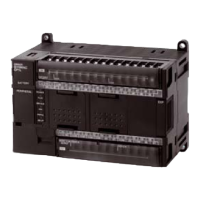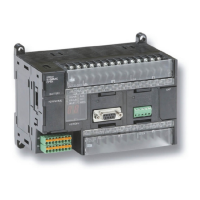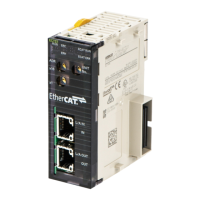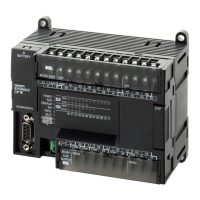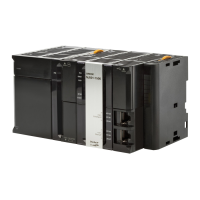153
Programming Console Operations Section 7-3
If the Programming Console is connected to the PC when PC power is
already ON, the first display below will indicate the mode the PC was in before
the Programming Console was connected. Ensure that the PC is in PRO-
GRAM mode before you enter the password. When the password is
entered, the PC will shift to the mode set on the mode switch, causing PC
operation to begin if the mode is set to RUN or MONITOR. The mode can be
changed to RUN or MONITOR with the mode switch after entering the pass-
word.
7-3 Programming Console Operations
7-3-1 Overview
The following table lists the programming and monitoring operations that can
be performed from a Programming Console. Refer to the rest of this section
for details on operational procedures.
Indicates the mode set by the mode selector switch.
<PROGRAM> BZ
<PROGRAM>
PASSWORD!
CLR
MONTR
Name Function Page
Clearing memory Clears all or part of the Program Memory and any data areas that are not
read-only, as well as the contents of the Programming Console’s memory.
154
Reading/clearing error
messages
Displays and clears error messages and displays MESSAGE instruction
messages.
156
Buzzer operation Turns ON and OFF the buzzer that sounds when Programming Console
keys are pressed.
157
Reading and assigning
expansion instruction
function codes
Reads or changes the function codes assigned to expansion instructions.
(Pin 4 on the DIP switch must be ON to assign function codes to expansion
instructions.)
157
Setting a program memory
address
Sets the specified program memory address when reading, writing,
inserting and deleting programs.
158
Reading a program
memory address and
monitoring bit status
Reads the contents of the Program Memory. Displays the status of the
currently displayed bit in PROGRAM and MONITOR modes.
158
Entering or editing
programs
Overwrites the contents of the current Program Memory to either input a
program for the first time or to change a program that already exists.
159
Instruction search Finds occurrences of the specified instruction in the program. 162
Bit operand search Finds occurrences of the specified operand bit in the program. 163
Inserting and deleting
instructions
Inserts or deletes instructions from the program. 164
Checking the program Checks for programming errors and displays the program address and error
when errors are found.
165
Bit, digit, word monitor Monitors the status of up to 16 bits and words, although only 3 can be
shown on the display at one time.
166
Multiple address monitor Monitors the status of up to 6 bits and words simultaneously. 167
Binary monitor Monitors the ON/OFF status of any word’s 16 bits. 168
Three-word monitor Monitors the status of three consecutive words. 168
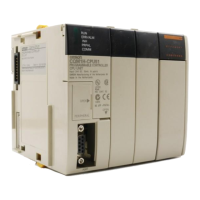
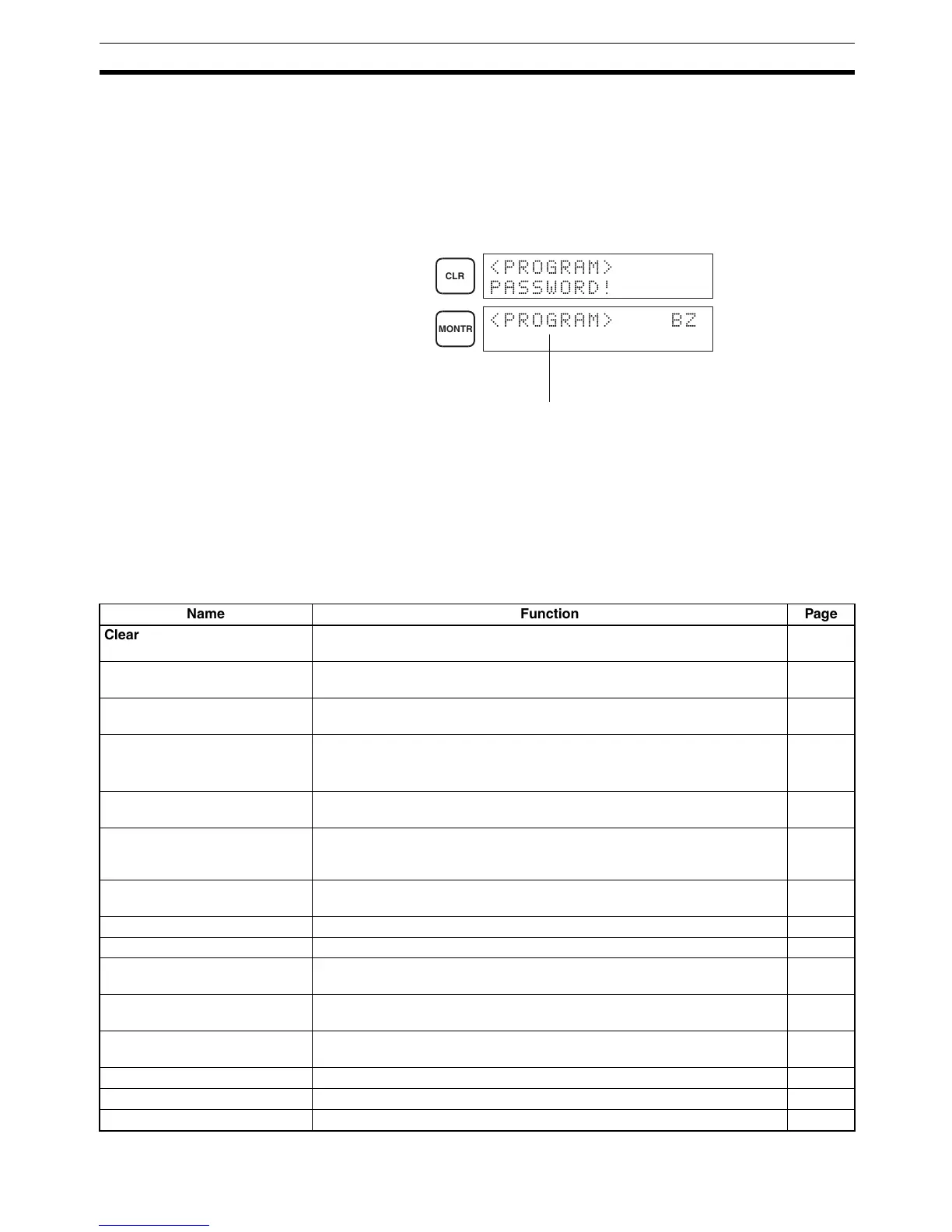